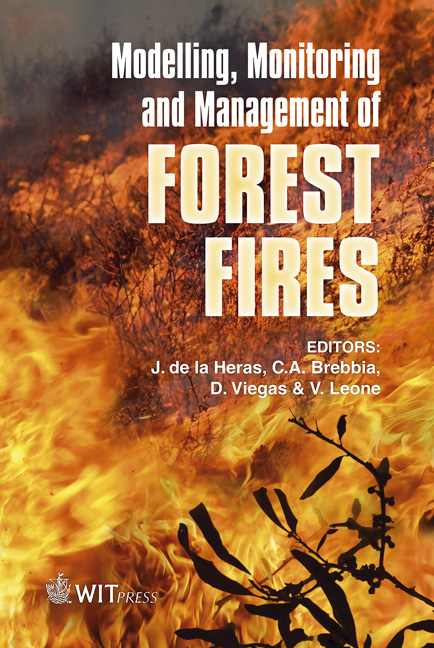Measurement Of Physical Parameters Of Forest Fires By Infrared Imaging Methods
Price
Free (open access)
Transaction
Volume
119
Pages
10
Page Range
111 - 120
Published
2008
Size
1,039 kb
Paper DOI
10.2495/FIVA080121
Copyright
WIT Press
Author(s)
J. M. Aranda, J. Meléndez, A. J. de Castro & F. López
Abstract
In the last years, infrared (IR) cameras have been used increasingly in forest fire related applications, but, in contrast with industrial applications of IR thermography, quantitative studies are almost nonexistent. This is due to the complex spectral and spatial structure of the IR emission that prevents a straightforward interpretation of images. However, multispectral systems, even with a resolution of only a few bands, can be used to great advantage in order to classify the infrared scene into different regions (flame, embers, ashes, background), each with a different spectral signature and affected in a different way by the atmosphere. In this work it is shown how this procedure makes possible to take into account spectral structure, in order to measure physical parameters like rate of spread, embers temperature, and radiated power in the spectral range of the camera. Measurements have been obtained in several experimental conditions, and results have been compared to data from estimations derived from standard methods. This comparison demonstrates the consistency of the two approaches, and makes possible to estimate also total radiated power, fire intensity and heat release per unit area from infrared measurements only. Keywords: infrared imaging, multispectral, classification, forest fires. 1 Introduction In the last years, infrared (IR) sensors, operating from satellite, ground-based or airborne platforms, have been used increasingly in forest fire related applications [1], including fire danger estimation, fire detection, fire monitoring, mapping of burned areas and follow-up of after-fire recovery.
Keywords
infrared imaging, multispectral, classification, forest fires.





